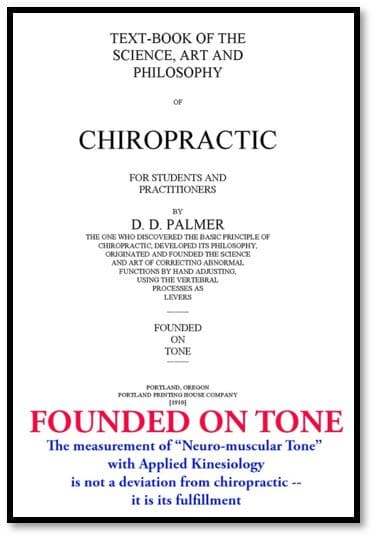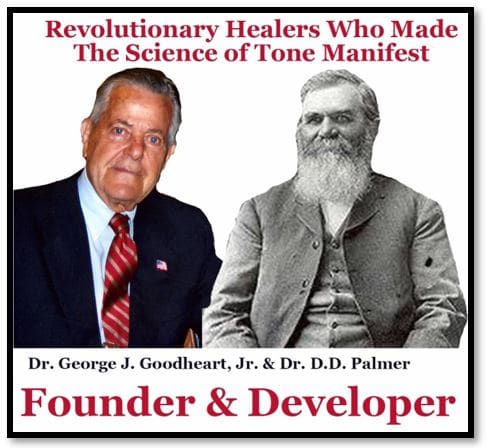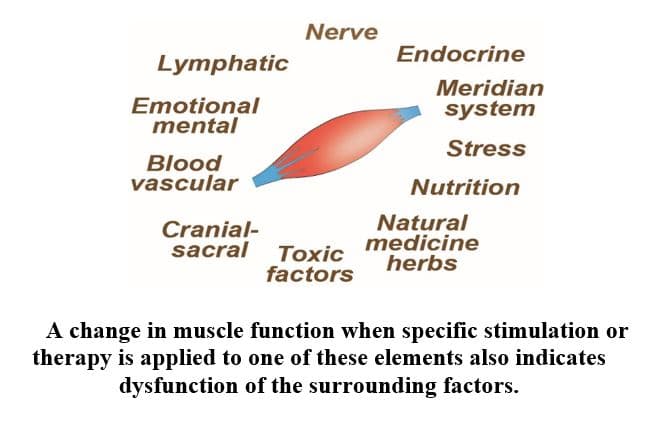by Scott Cuthbert, BA, DC and Clive Lindley-Jones DO DIBAK
With contributions from:
Robert Blaich, DC, DIBAK, DAAPM, DAAIM, DCBCN
Geert Drenth, DO, DIBAK
Hans Garten, MD, DO, DICAK, DACNB
Antonio Gil DC, CCSP
Gleb Kirdoglo, MD, PhD
Seung-Won Lee, MD, PhD, DC, DACNB, DIBAK, FACFN
Donald McDowall, DC, DIBAK
Rudolf Meierhöfer, DDS, DIBAK
Richard Meldener DC, DIBAK
Laurent Picard DC, DIBAK
Eric Pierotti DC, DIBAK
Joseph Shafer DC, DIBAK
Olegs Suhorukovs MD, DIBAK
Abstract:
Thirteen contributing authors and teachers of Professional Applied Kinesiology (PAK) chiropractic technique tell the story of the growth of the International College of Applied Kinesiology around the world (and the penetration of PAK into allied healing professions, in Part II). This narrative history presents the detailed, colorful story of the permeation of chiropractic’s AK manual muscle testing (MMT) methods and philosophy into the daily practice of hundreds of thousands and potentially millions of clinicians both within the chiropractic profession and without. Illustrated throughout with historical pictures covering over five decades, this is the first comprehensive history of AK and chiropractic manual muscle testing. The remarkable story of how this system of chiropractic manual diagnosis has been taken up by many allied professions and professionals around the world is offered in Part II of this narrative history of PAK.
Prologue
The growth and spread of Applied Kinesiology® (AK) chiropractic technique around the world has been remarkable in both the professional and public arenas. The clinical methods of Applied Kinesiology are a metaphor that embraces most of the directions complementary and alternative medicine has taken in the last century. It has been calculated for instance that approximately one million people now use the MMT worldwide as part of their diagnostic methods1 and that half of the chiropractors in the United States and Australia use AK MMT methods.2-4 Chiropractors, osteopaths, manipulative and functional medical doctors, nutritionists, acupuncturists, energy psychologists, and massage therapists have also embraced Applied Kinesiology over the past half-century, making it one of the most prevalent and influential chiropractic techniques that has been taken up by allied healing professions.
Origins
If we look back into the writings of the founder of chiropractic, Dr. DD Palmer, we find evidence that he likely foresaw the manual muscle test as a means to diagnose the “tone” of the central and peripheral nervous system.5-6
Dr. George J. Goodheart, Jr., the founder of AK has said that he was indebted to the philosophy of chiropractic espoused by DD Palmer for the guiding thought that produced applied kinesiology methodologies.
The applied kinesiology combination of vitalist philosophy and triad of health explanations give the doctor and the patient a rich vocabulary for those illnesses that conventional allopathic medicine is poorly equipped to address. Research indicates that for the functional illnesses that the majority of clinicians around the world treat, precise diagnosis of causative factors, assurance of recovery by measurable improvements (revealed in the immediate improvements in the manual muscle test), and physician-patient agreement about the underlying nature of their problem hasten recovery.7
Perhaps one driver for this openness has been the growing awareness of the interconnectedness between the structural, biochemical, and psychological-spiritual aspects of physiopathology: what is called the Triad of Health. The triad is especially apparent in chronic conditions, which are now the dominant challenge within general practice as well as the most common patient complaint and cost to health care systems.

Since their inception in the ferment of late nineteenth-century American frontier medicine, the manual medical schools (chiropractic and osteopathy) have depended on highly developed palpation skills to assess tissue changes on the surface through which they inferred important but subtle changes in the organism beneath the surface.
Into this environment stepped George J. Goodheart, Jr., DC, who in 1963-64 discovered the signifying power of the underlying motor system, through the tool of the manual muscle test (MMT), to potentially provide valuable information, making the MMT a form of functional neurology.8
The concept of neuromuscular “tone” was the basis of early chiropractic science and practice, and a core principle of DD Palmer’s. Muscular “tone” reflected the status of a tissue or organ’s innervation.5-6

The manual muscle testing procedures developed in AK essentially see muscle tone and function as a transcript of the central integrative state of the anterior horn motoneurons, summing all excitatory and inhibitory inputs flowing into the nervous system.8 In AK, the locus of dysfunction detected by the manual muscle test ultimately rests within the nervous system.
Abnormal results of the manual muscle test, whether the muscle is weak or hypertonic, may indicate abnormal involvement of any of the factors surrounding it.
Goodheart was one of the most imaginative, open-minded and brilliant clinical researchers of his profession and age, and he had an enormous impact.9-10 As an integrative approach to health care is being developed throughout the healing professions (a movement led by the chiropractic and osteopathic professions), the most important cornerstones of this developing worldview are still slow to be integrated into the biomedical framework. But if our aim is to encourage better physiological and personal functioning, then a broader approach to the ‘diagnosis’ of what has disturbed our patients’ normal state of self-organization will be necessary.

This began the long, lonely road all original thinkers travel. Goodheart first taught the new technique at a meeting of the American Chiropractic Association in 1964. As muscle testing became routine along with standard diagnostic methods, other forms of treatment were found to immediately return a weak muscle to normal function. Goodheart had found a new principle that the scientific literature had not previously dealt with: muscle function can be instantly improved by the correct form of manual treatment.





